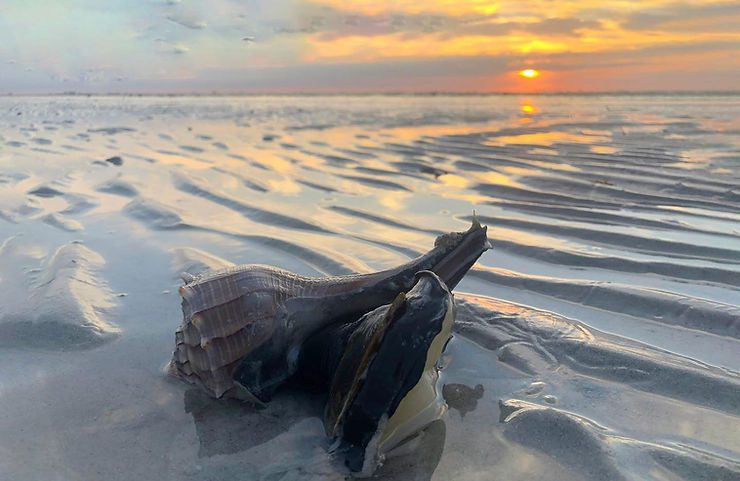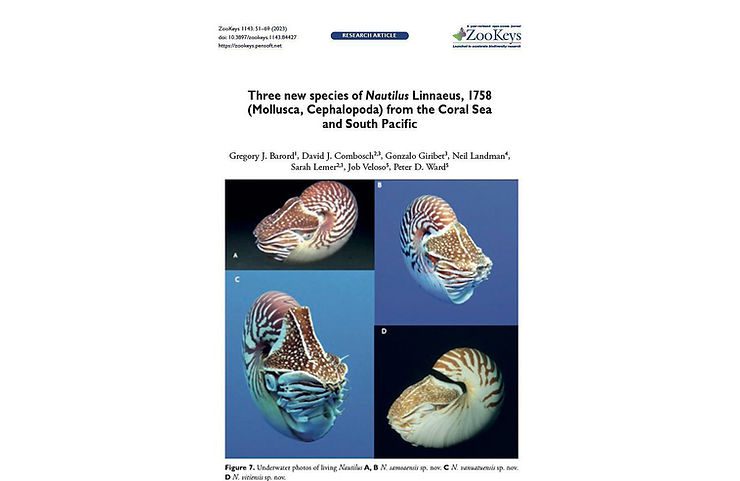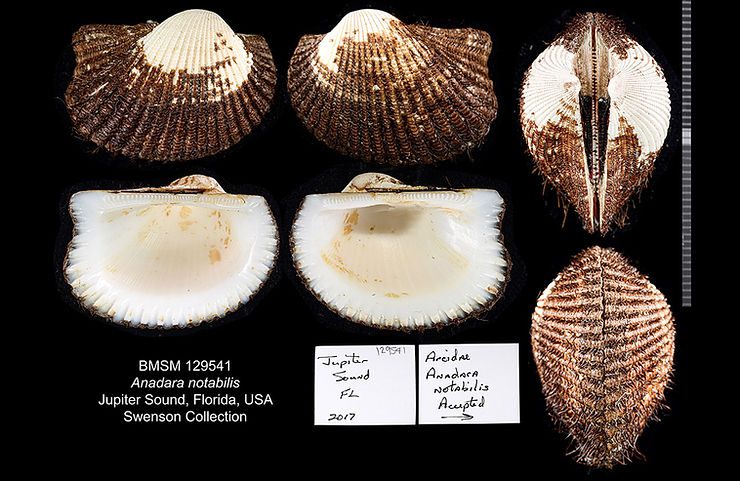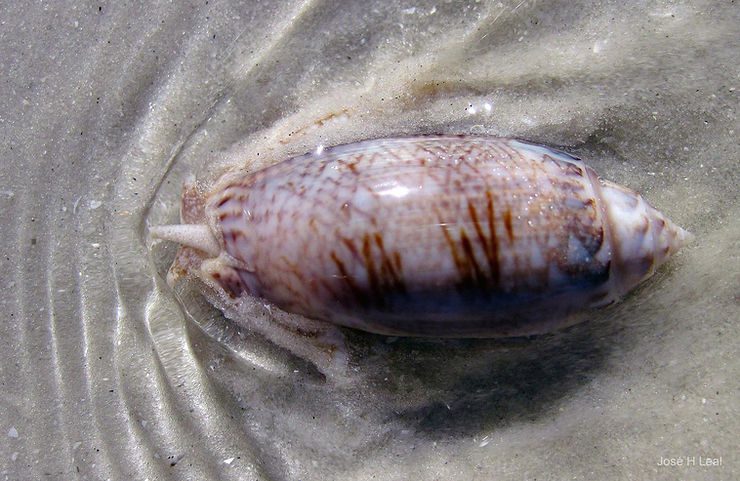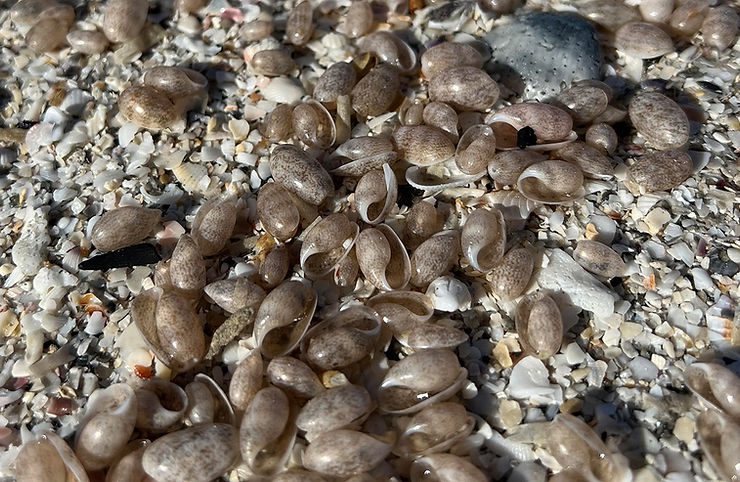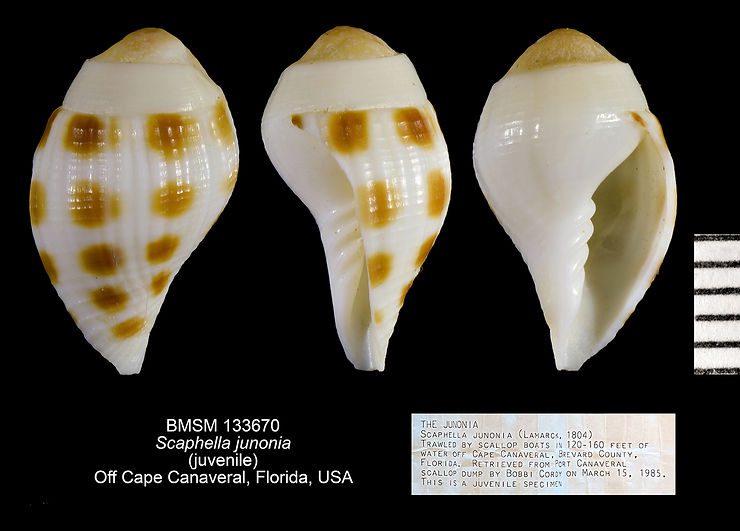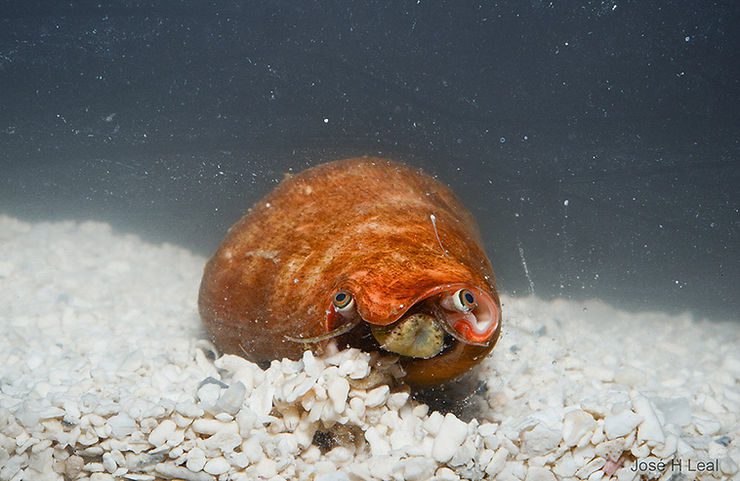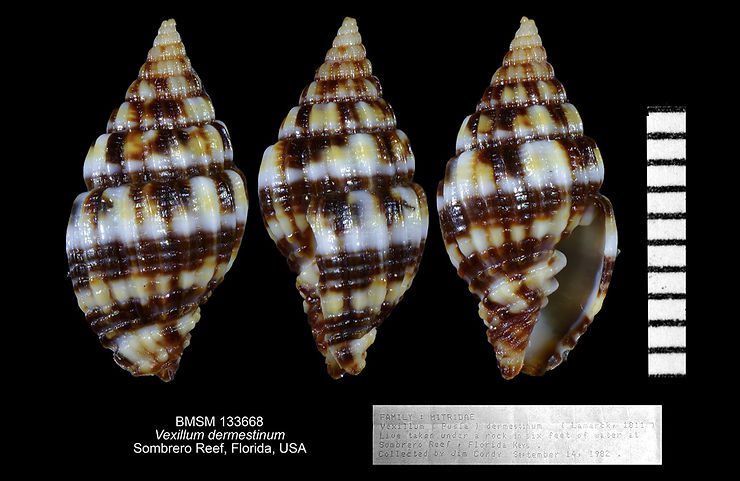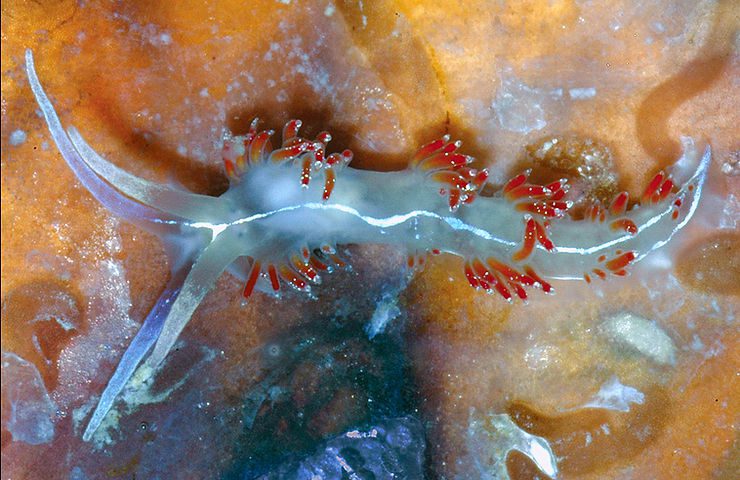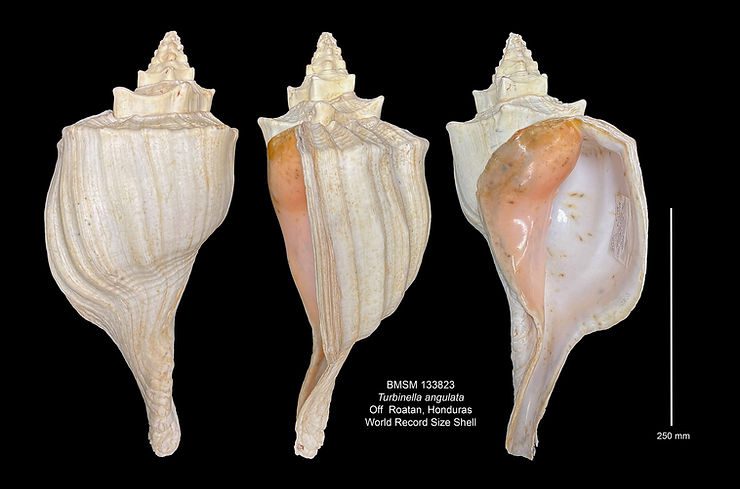
A Big World Record Size Shell!
The National Shell Museum received a new world record size shell for its collection! Mr. Donald Dan, of Fort Myers, Florida, generously acquired the record-size West Indian Chank, Turbinella angulata, for the Museum collection. The shell, collected years ago by shrimp fishermen offshore of Roatan, Honduras, measures 499 mm (just under 20 inches). The gift was reported in the Monday, February 13, online version of the Fort Myers News-Press, with a comprehensive interview about the species and the
